Piranesi's Imaginary Prisons/Carceri d'invenzione (TalkingAboutArtPost)
First new art post in a while, enjoy!
Hey All,
First of all, the guy who did this is cool, and his name is Giovanni Battista Piranesi. I haven’t done any art appreciation bits on here in a while, so this may be a shorter post, but I’ve been looking and have been interested in Piranesi’s work ever since I first saw them this week online, so here I am.
For a basic rundown, Piranesi was born in 1720 in Venice and trained as an architect before moving to Rome in 1740. In Rome, Piranesi became fascinated by the ancient ruins and started documenting them through detailed etchings. His most famous work in this vein is the “Vedute di Roma,” which made up a series of 135 prints.
“Vedute di Roma” is cool, don’t get me wrong. I will admit I like looking at them and thinking about the Roman Empire and all that(go look at it), but in all honesty of Piranesi’s series of works, the one most interesting to me is a series of 16 prints made around 1749-50, in which Piranesi created his acclaimed “Carceri d’invenzione” (“Imaginary Prisons”) a series of etching and engravings which are typically seen as early precursor of Romanticism and Surrealism - depicting huge, labyrinthine prison interiors with obscure machinery and infinite stairs.
What Piranesi is able to create are basically surrealist Catholic God-fearing architectural fever dreams of oppressive and goliathan design - vast labyrinths of stairs and machinery that stretch on forever. These ominous prisons completely warp your sense of space. Carceri d’invenzione” is filled with endless hallways and shafts that nearly seem to swallow the tiny human figures. People become powerless ants, overwhelmed by the sinister vastness of the vaulted ceilings, disappearing into the darkness, the final roof so far away it might as well be replacing the sky.
Despite the massive scale, Piranesi’s prisons are completely claustrophobic and confining; the staircases, scaffolding, and stone buttresses descend endlessly into shadow, unlike any sensible, ordinary buildings open to the sky.
Piranesi used the chiaroscuro method of strong contrast between light and shadow. This creates a sense of drama and depth/space in the paper.
The lack/replacement of the sky in a lot of these works bleeds desperation with no horizon. Still, the facade of one and with no discernible escape or free movement within these works powerfully conveys the feeling of infinite, inescapable imprisonment. These structures seem designed to crush the human spirit through their sheer monumental bulk.
Piranesi’s prisons convey darkness and a dread, both physical and psychological, with the little humans we see and relate to. Within their enormous walls and the desperation they cause, all hope is seemingly lost forever. The scale Piranesi is working with is powerfully oppressive.
I will try to stop being an annoying art narc, but I am trying to be sincere; I really do like this guy’s work; it is all so incredible.
To preface: I know Piranesi didn’t invent the optical illusion(that was the Greeks), but for example, in The Round Tower(Below), the cylindrical room looks like it stretches upward forever. But it’s really just the same visual elements repeating over and over. These radial patterns draw your eye upward and give the illusion of an endless ascent with so much detail and all by hand. In the 18th century, before anyone had any foundation of optical illusions and their forms, he was sometimes throwing dozens of optical illusions per etching using radial perspective, false vanishing points, exaggerated foreshortening & cropped framing, and impossible structures, sometimes all being present within just one of these “frames” depicting these prisons, which is super impressive, and he was able to do all of this in large part because of his architectural background allowing him to both use and deconstruct architectural methods to craft these gargantuan prisons.
Piranesi’s use of optical illusions prefigured Op Art and its focus on disorienting effects. His repeating patterns and visual tricks challenged the eye centuries before these were more formally and widely understood, with Piranesi’s radical manipulation of perspective and imagery in his Carceri series foreshadowing many later developments in visual art.
And it’s cool to see the influence Piranesi had on surrealists like MC Esher, Max Ernst, and Giorgio de Chirico in some ways, directly building upon Piranesi’s irrational juxtapositions and oneiric dreamscapes nearly a century after his last work was made. But of those guys, the aforementioned Dutch artist M.C. Escher was my favorite, employing impossible geometries and scale to dwarf the human presence. In Escher's work, people become part of the mathematical patterns, trapped within the infinite loops and disorienting dimensions, with much more “clean precision” in comparison to Piranesi's gritty prisons with weathered and brutal textures.
With more of his work below, I’ll leave it here: this guy’s stuff is cool, and I like it, simple as(ignore the literal newsletter I run).
See ya!


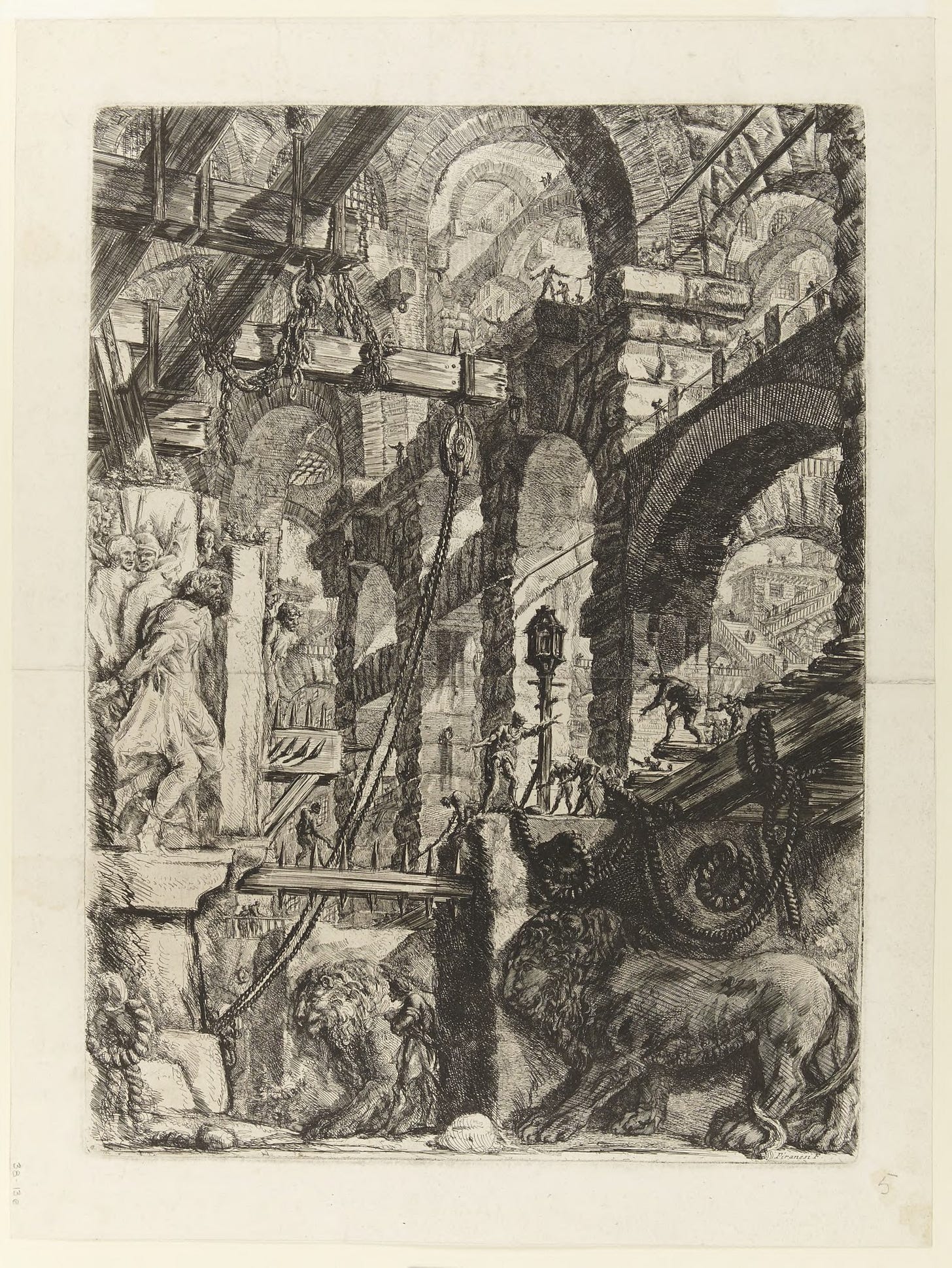
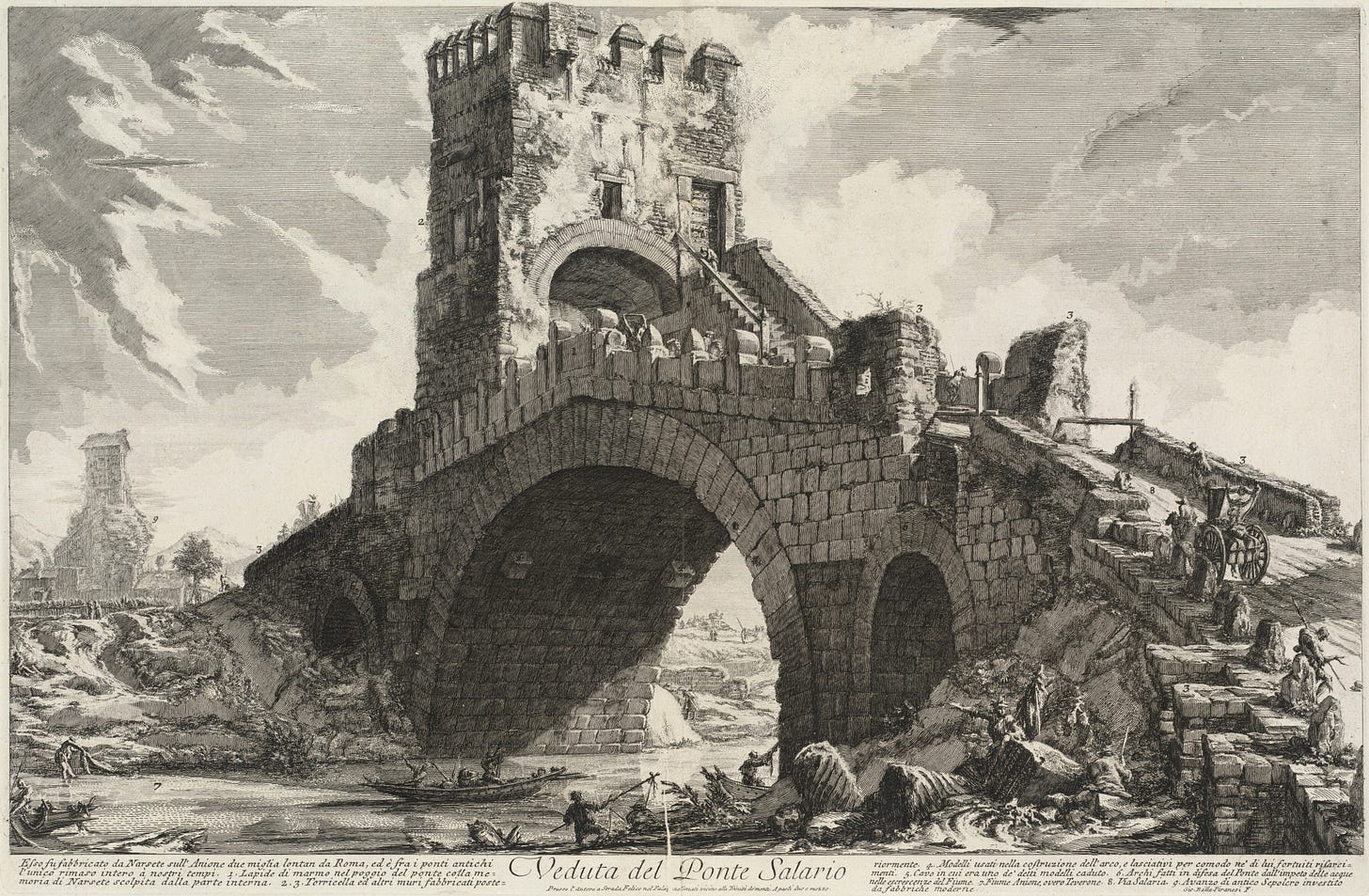
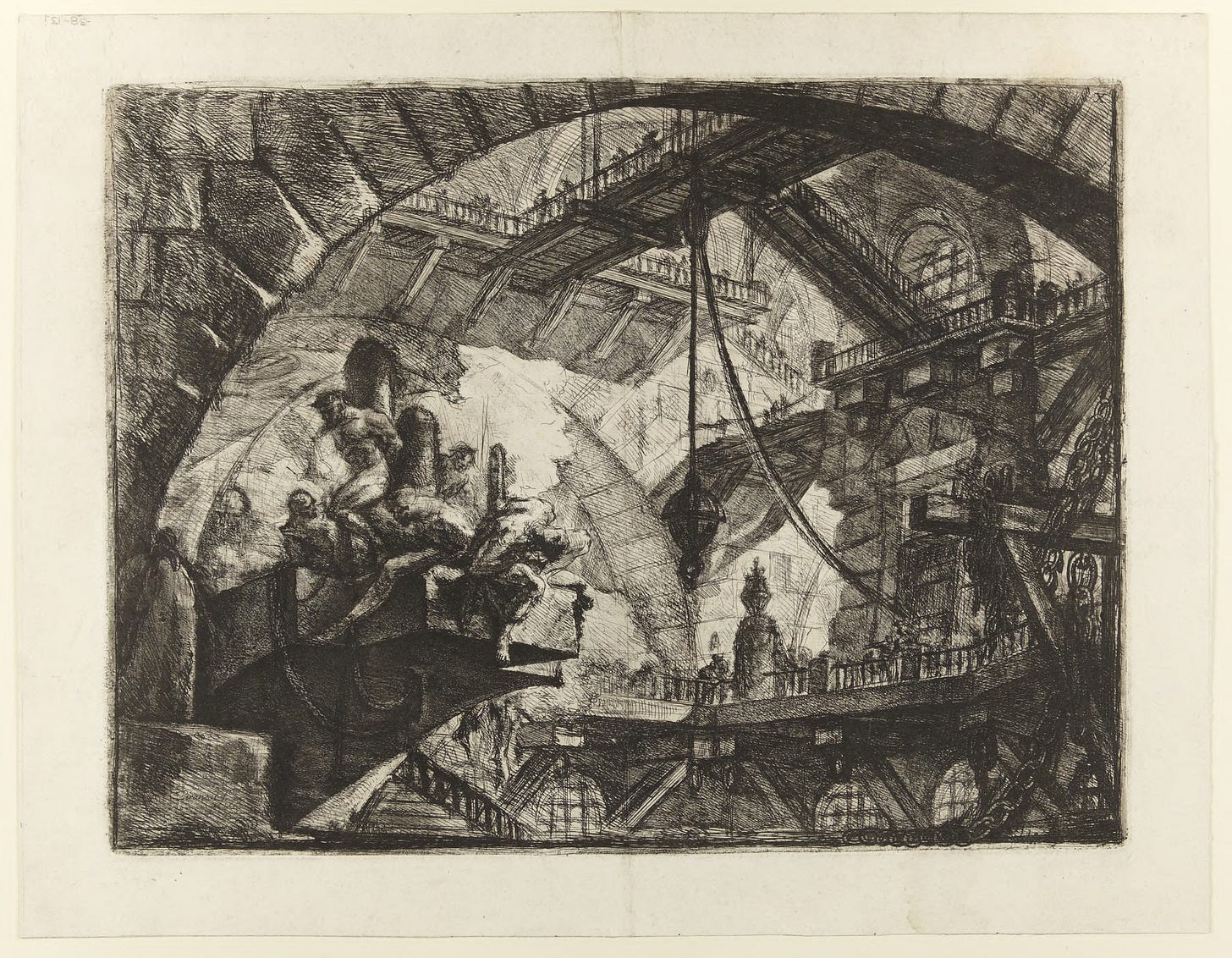
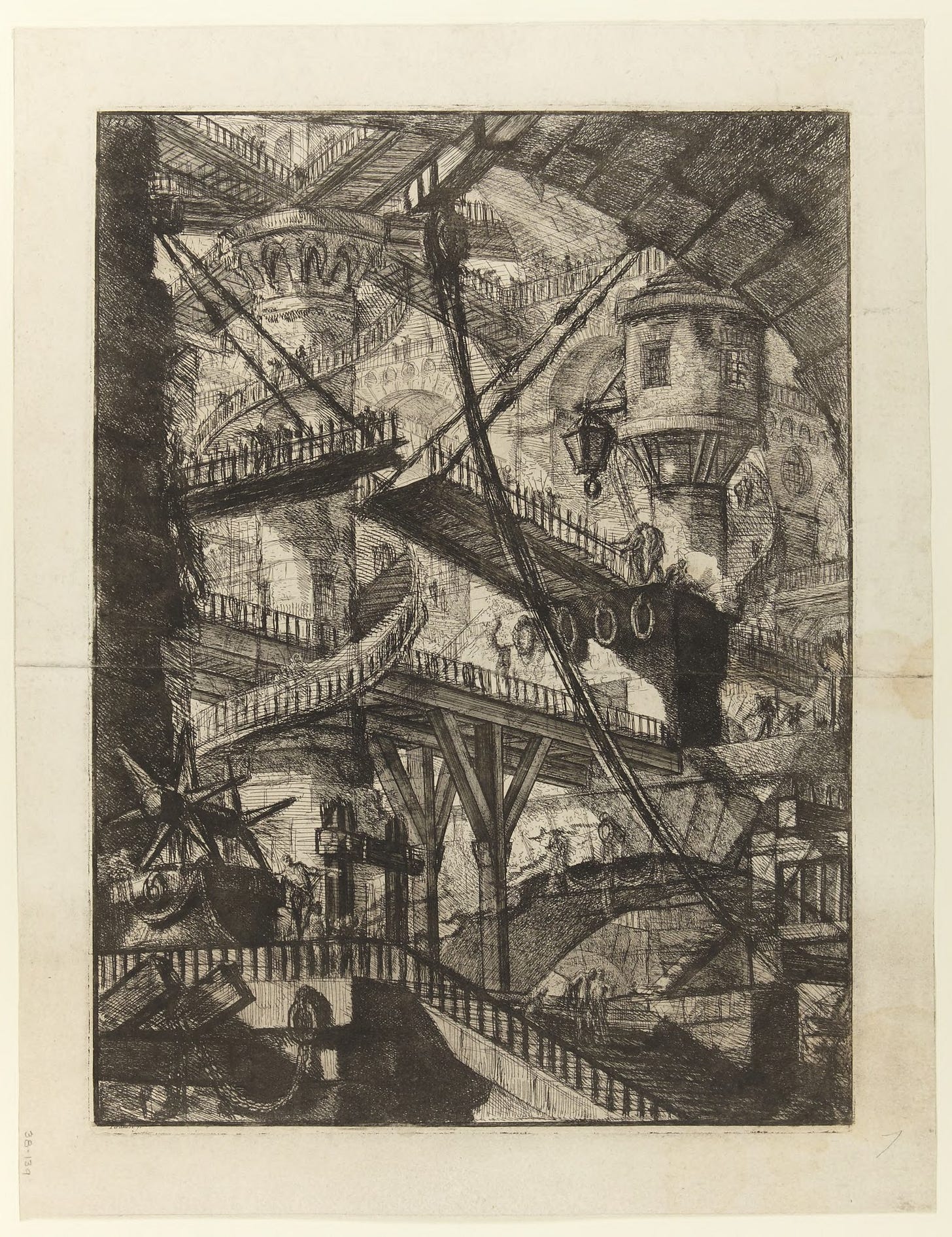

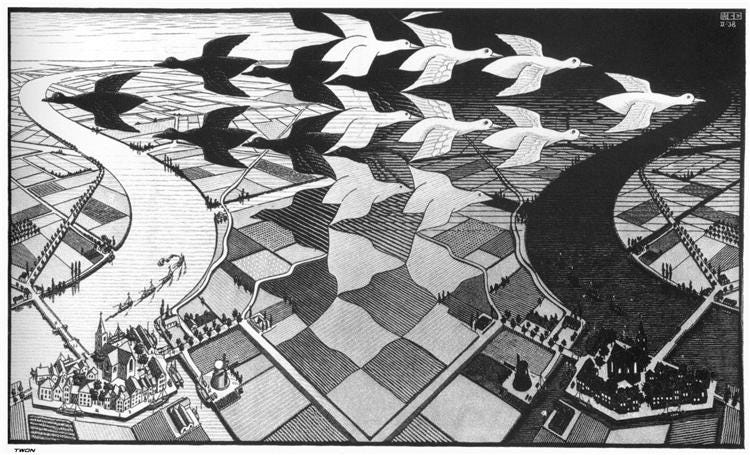
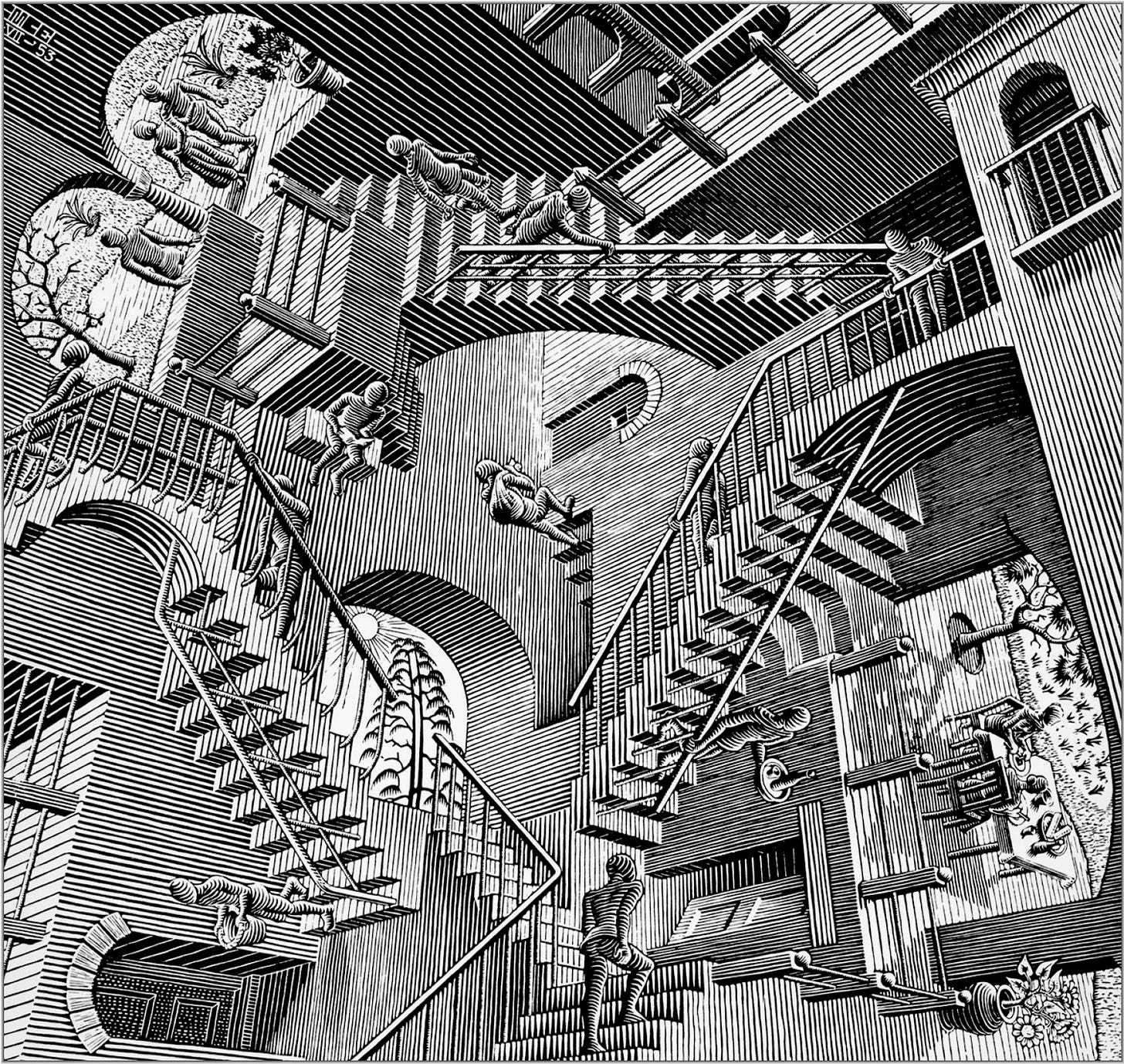
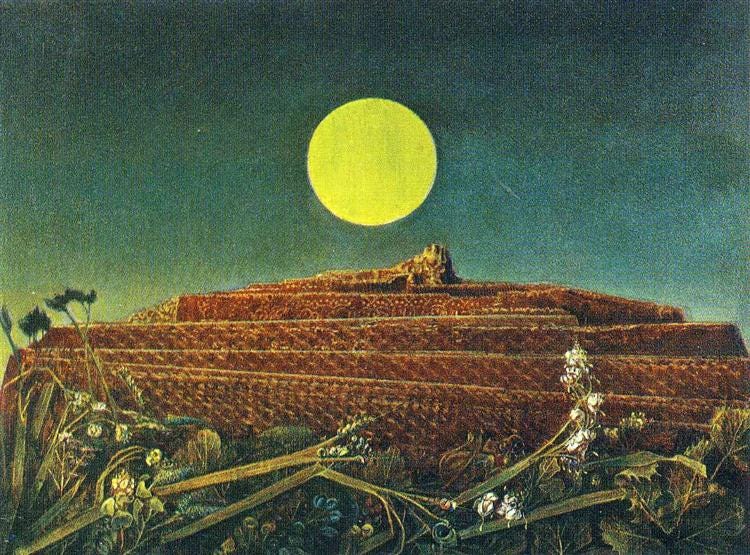
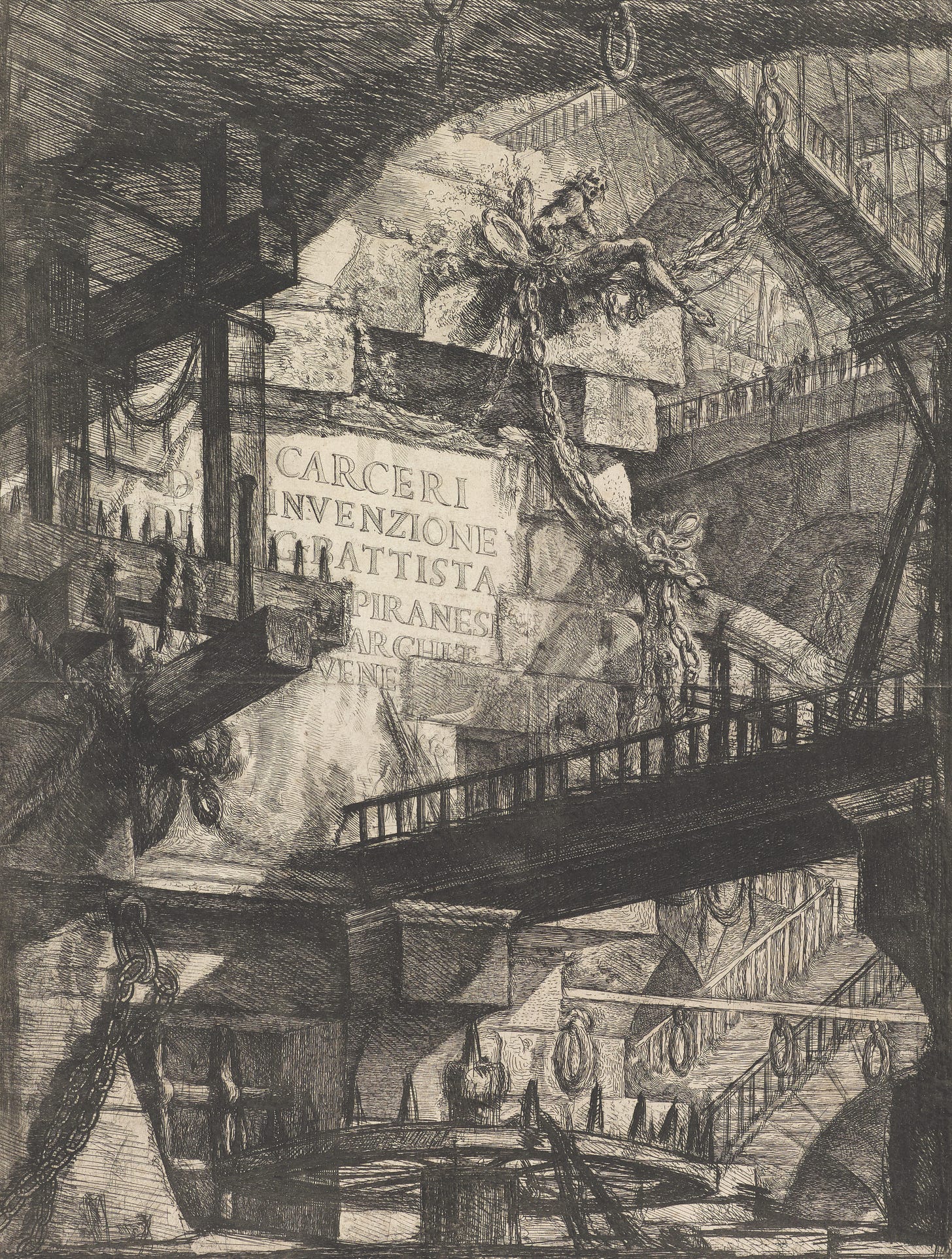
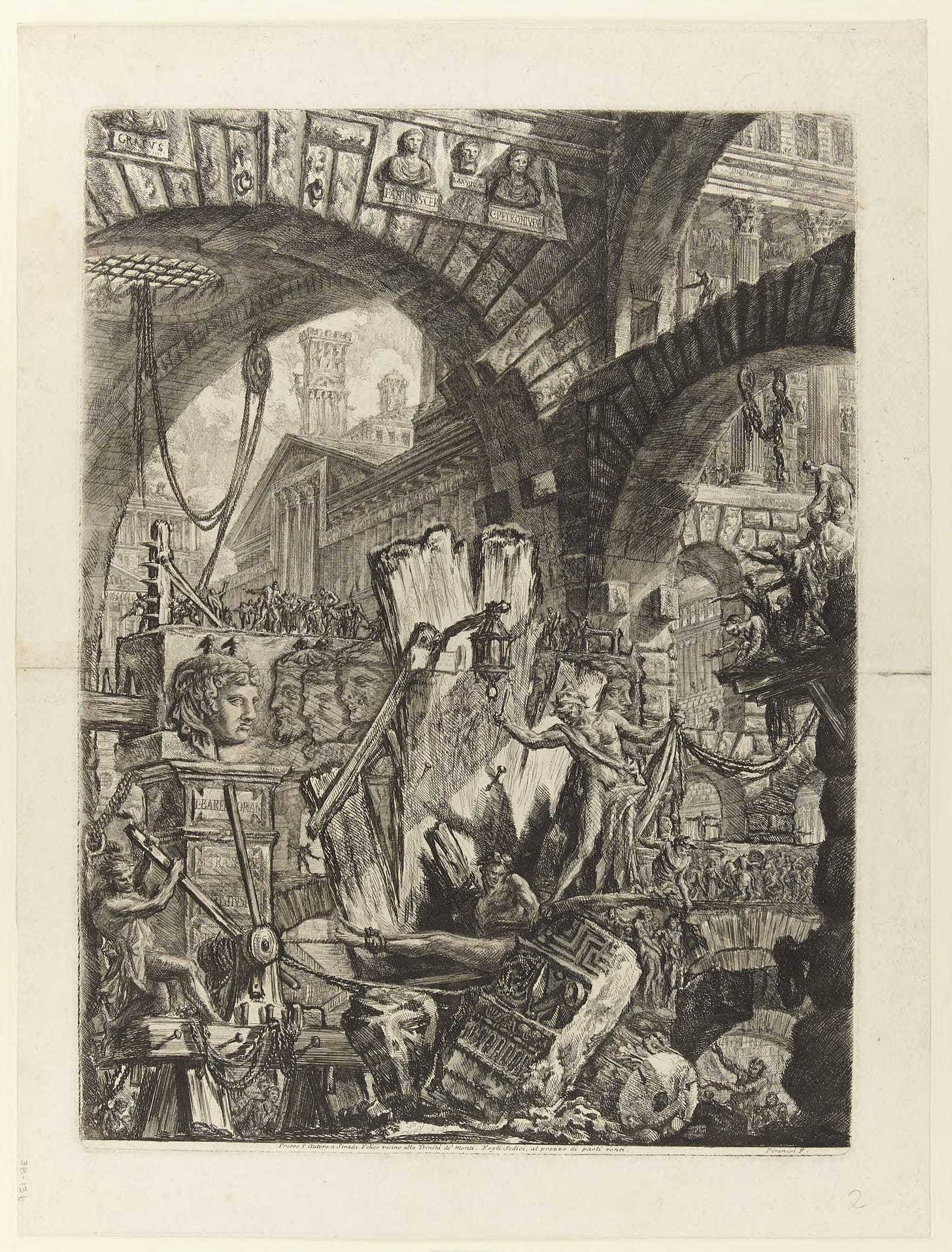
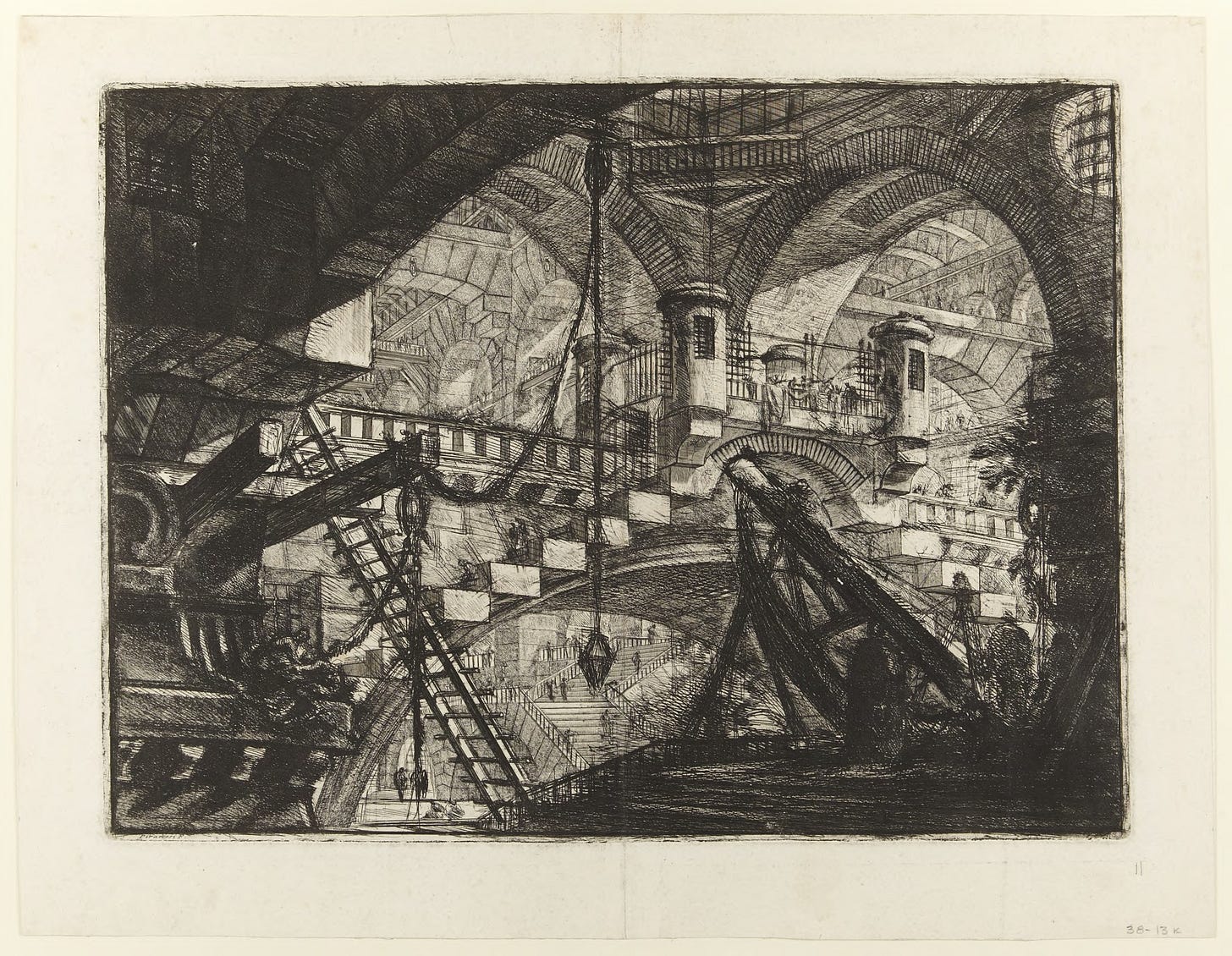
I’ve never heard of this artist - now I need to see, and learn more! Thank you for sharing, and keep them coming....your writing and perspective is fascinating 🙌🏻